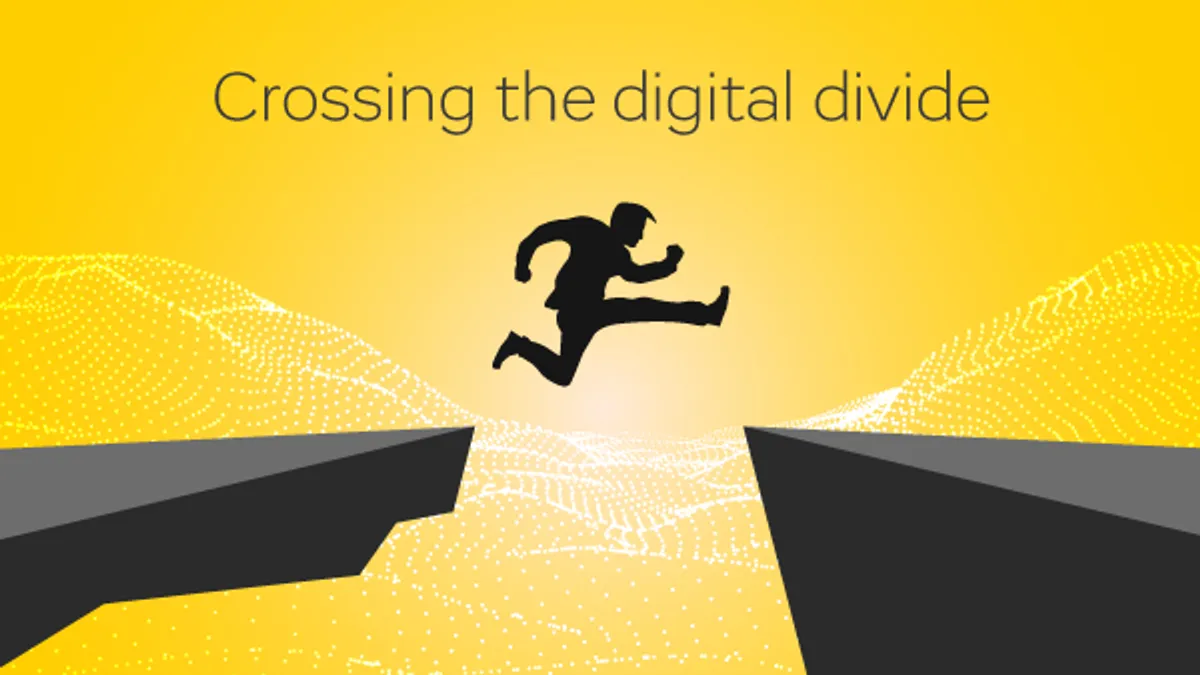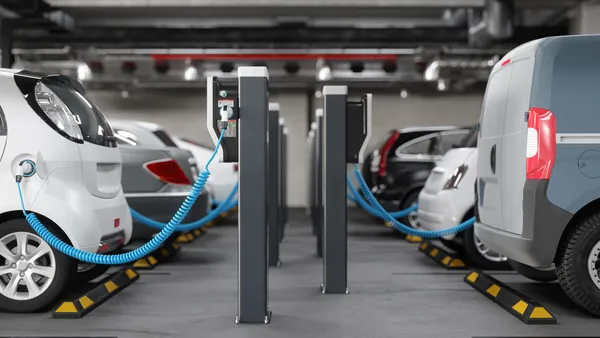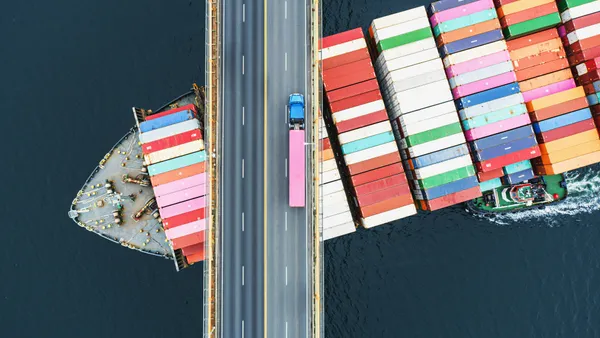When it comes to service, transportation firms cannot deliver tomorrow what they delivered yesterday. To achieve the next level, they must cross the “digital divide.” The term digital divide has many meanings. It can refer to the separation created by differences in internet and technology access prompted by socioeconomic or demographic factors. It also can embody differing corporate stances on technology adoption, as used herein. This digital divide recognizes that some firms embrace technology, while others will stick with spreadsheets and telephones. They may streamline some processes through automation, but technology does not fundamentally change the way staff work.
Historically, the business decision to cross the digital divide was optional. Today, though, it is customer expectations that are driving the need for technology, as are profit margins.
Consider this scenario: A medium-size broker employs a team to call each carrier to determine vehicle location, manually record that information, input it into a common data bank and respond to inquiries on delivery times by phone or email. Compare that customer experience with the one major retailers offer. Customers track every shipment movement on their smart phone or other device and can identify precise delivery time within minutes. In the B2C world, consumers may pay a $10 shipping fee that includes this heightened customer experience, yet, in the B2B world, they pay hundreds of dollars for the distinctly different level of service the described broker offers. And don't think customers are not noticing the difference.
Every day customer expectations increase. At the same time, transportation firms must do more with less. In an industry where the typical broker operates with a 15% margin, every time the firm must scale its operations and hire another person to place calls, it thwarts its ability to grow. And, should the industry’s operating margin fall further, the technology-averse broker will have difficulty scaling operations, jeopardizing overall survival. Suddenly, the digital divide becomes more like a digital chasm, separating the “can dos” from the “can’ts”.
THE CHALLENGE
The technology agenda is, to a large extent, being set by a few large companies and their customers. These businesses spent years of time — and millions of dollars — to develop the technology that is now driving customer expectations. They are squeezing the margins and often acting as 3PLs and 4PLs to occupy the space between traditional shippers and customers. Unless you are one of the “big guys” that invested large sums in technology, then you face a critical choice: either find those resources now to develop proprietary systems or find someone to help you bridge the digital divide in a smart, yet affordable, way.
THE SOLUTION
Organizations like CX North America have harnessed the core technologies that automate visibility, communication, collaboration and control. In fact, CX North America and, by extension, its parent company, Transport Exchange Group, have been doing so since 2000, long before crossing the digital divide became a business necessity. Time-tested solutions now allow a single owner-operator in one truck, an SMB (small to medium business) or even a larger business to employ high-level technology, already integrated with TMS and other systems, without uploading software and integrating systems.
Vendors like CX North America offer Software as a Service (SaaS) solutions, where transportation managers can select the exact functionality needed to empower their best business processes. Available technologies span tools for greater collaboration, communication, visibility, load matching and other information sharing, just like the “big guys” have.
Such solutions are democratizing the industry, offering every organization, whether comprising one person or 10,000, a simple way to cross the digital divide and compete effectively in a highly competitive space. While impossible to emulate the major players precisely, SMBs can identify the functions they do best and use technology to do them better. While staff may still man phones, they become more efficient, more customer-facing and can handle more customers and carriers. They then provide levels of customer service that even the big players can’t deliver. And, the company possesses the capability to scale operations more cost effectively.
• • •
The takeaway is simple: the digital divide can quickly morph into a digital chasm or, worse still, a digital cliff. Today, it is easy to cross the divide with the right partner. Tomorrow, growing turbulence and more change will make the journey more difficult. And, the more you delay, the more vulnerable your business becomes. Just because your customers aren’t asking you for real-time tracking, doesn’t mean they aren’t looking for it elsewhere.
About the Author
Simon Bunegar is senior vice president of marketing, CX North America Information Services Inc. His early career focused on building and designing network computer systems around the world, from Angola to Siberia. Later, he moved into the B2B customer service technology space, lending his business and technology acumen to companies including Lucent, Avaya, Cisco and now Transport Exchange Group and CX North America. He is passionate about helping businesses excel by combining smart technology with business process innovation and common sense.










